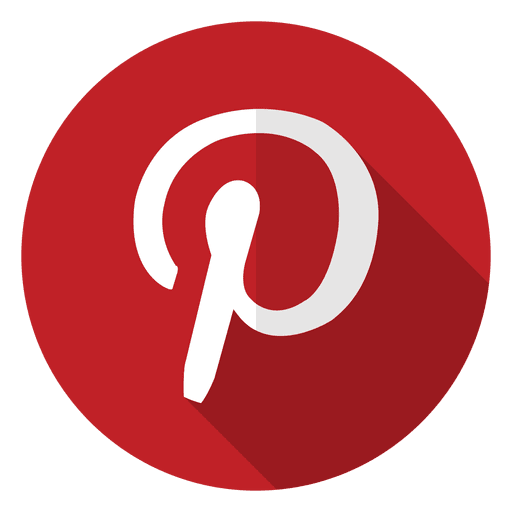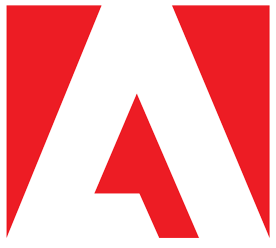How I Started A Commercial Product Photography Business
Hello! Who are you and what business did you start?
Hi! My name is Tsour Lee Adato and I am the founder of Pro Photo Studio. I started my product photography business over 5 years ago while living in New York. Pro Photo Studio specializes in high-end commercial photography and also caters to the average eCommerce online seller who sells on platforms like Amazon and Etsy.
In the last year, Pro Photo Studio serviced over 500 clients, many of them being return clients and since opening, we have taken tens of thousands of images. We invest in premium equipment to always provide the highest quality images and we are constantly innovating.
Our clients span from the most prestigious brands including Starbucks, Shiseido, Ferragamo, and Versace to your everyday Amazon seller.
We have a team of 3 photographers and 3 retouchers with plans to expand and open studios in several major cities to meet increasing client demand. We are currently putting out feelers for a strategic partner who will be a value add in the expansion process.
The company began realizing a profit very quickly, in the first quarter after opening and year over year profits have increased while the cost of customer acquisition has decreased. Currently, the company makes approximately $350k per year and is on its way to becoming a 7 figure business.

What's your backstory and how did you come up with the idea?
The idea to do product photography was not planned and came to me as a happy accident. I always had a passion for photography but my photography journey truly started when I was working as a bodyguard for Britney Spears. During that time my role expanded and I became her personal photographer and videographer. I was a part of her MTV documentary and some of the images I shot of her was also featured in OK and Star magazine.

I enjoyed photography but at that point wasn’t thinking of it as a career choice. From there I started a business that was entirely unrelated to photography, or anything creative for that matter. After a few years in that business, I decided it was time to close the doors.
Don’t assume you know what the clients want. Always ask questions and make sure you are on the same page.
I moved back to New York from California, took a more traditional job opportunity working with an engineering company in NYC and about 1 year in I found myself longing to work for myself again and also missing the fulfillment I experienced creating and expressing myself through art. I decided to start a photography business and began taking headshots of people from my living room.
About 2 months in, a client asked me if I could shoot one of his products. At the time I had zero knowledge about product photography which is a complex niche requiring specific knowledge and skill relating to aspects of photography like lighting and design and even requiring different equipment. Regardless, I said yes and quickly realized product photography could be an incredible business that really appealed to me.
I became obsessed with learning everything I could about product photography and honing my craft. I began taking classes online and joined online communities including Photigy and Carl Taylor online school of photography.
At one point I was spending upwards of 10 hours a day learning and practicing. Looking back, my first images were truly amateur but with every image I took I improved and became better skilled at delivering premium results for my clients.
Today, I have reached a level that enables me to teach and mentor others. In addition to running my studio and taking photos, I have been brought in to help companies set up their own studios and teach there in house photographers.
Take us through the process of designing, prototyping, and manufacturing your first product.
Over the years we have developed a streamlined process that works well for us, and equally as important, for our clients. We have a very in-depth website where we display our portfolio and provide a great deal of information about our process and service offerings, who we are, and we also feature various client success stories.
The website is designed to display our work as well as to help clients determine what their specific needs are, what they can expect their cost to be, and understand the process and what they can expect once they decide to proceed with us. We do this by presenting our portfolio in numerous and specific categories (jewelry, apparel, beauty products, Amazon photos, etc.)
We offer different add ons to our services such as models, lifestyle images, raw files, and various licensing purchase options. We allow clients the ability to request a quote through our website as well as simply place an order. Our order form is detailed enough to allow us to understand what the client wants and needs and price appropriately without making the process cumbersome for our clients.
Because every product is different and it is not one size fits all in product photography, we have a price calculator on our website that has major product categories and facilitates our clients in knowing what to expect as far as pricing is concerned.
Once the client fills out an order form online they ship us their product. Upon receipt of the product, we contact the client and work with them directly to ensure we understand our client’s requirements and are on the same page.
From there we send them an invoice. We require a 50% deposit before we will begin work which generally takes 5-6 business days from shooting to having final retouched images. From there we send samples to the client and upon approval and receipt of the balance, we electronically deliver the images.
For our accounting, we use Quickbooks online. For order forms, JotForm and for all the image files we use a pro-business Dropbox account.
Describe the process of launching the business.
To start the business I used my own money, which was approximately 5k. Because at that point I had been photographing headshots I needed to purchase different lenses that were appropriate for product photography as well as a variety of props, different lighting, and some other basic equipment like translucent paper to diffuse light and softboxes.
I initially created the website myself with WIX and after a year I decided to move it to WordPress for SEO purposes. As far as attracting and converting clients, thanks to my background in advertising and digital marketing it was fairly easy for me to get clients. Within the first few days of advertising, I had my first clients. Six months into the business I couldn’t keep up with the demand on my own and I began to build a team.
Lessons learned since starting this business are many. Don’t assume you know what the clients want. Always ask questions and make sure you are on the same page or you will find yourself reshooting often and with unsatisfied clients. Make sure the client pays the deposit before shooting the product.
Equally as important, don’t undervalue yourself. When you undervalue yourself you attract lesser clients who will nickel and dime you and will not appreciate the service you provide. The more I learned and skilled I became, the higher my prices go.

Since launch, what has worked to attract and retain customers?
Our website is instrumental in attracting clients. Showcasing our portfolio, the various services we offer and helping prospective clients imagine what working with us can do for their products and marketing efforts. Once we have gotten past that hurdle, overdelivering and providing exemplary customer service have played a critical role in creating and maintaining relationships that not only keep our customers coming back to us but also referring other clients to us.
Providing high-quality images consistently that meet each client’s specific needs, meeting or beating deadlines, being flexible, nimble, and innovating has also been crucial to the growth of the business.
As far as advertising is concerned, we focus primarily on social media, Facebook, Instagram, and TikTok. We also have a presence on Google and Bing in our efforts for additional exposure.
How are you doing today and what does the future look like?
The business is profitable, netting about 30%. About 60% of our revenue is from returning clients. We currently have one location and are in the process of adding additional locations in major cities. The first two on our expansion list are Dallas, TX, and New York City. We have also begun planning for a location in Israel.
Don’t undervalue yourself. When you undervalue yourself you attract lesser clients who will nickel and dime you and will not appreciate the service you provide. The more I learned and skilled I became, the higher my prices go.
Through starting the business, have you learned anything particularly helpful or advantageous?
The two lessons that I am reminded of almost daily are to always be innovating, learning, and growing. Do not be complacent. Standing still is not really standing still, it always results in plateauing and losing momentum.
Learn the business, hone your skills, and figure out what makes you stand out so you are not playing the copycat game and not simply just one of the herd.
The second is to always trust your gut. There have been numerous times where my gut has guided me to take any action that seemed to contradict reason but when I follow my gut I never go wrong.
What platform/tools do you use for your business?
We use Later.com as our social media scheduling platform. It's an Instagram partner and we found it to be the best tool and provides us with the most options. For booking and invoicing we use QuickBooks online which is a fairly easy software to use and teach new people as well.
We shoot images with capture one pro and edit with either Photoshop or Illustrator. For video production, we use either Final Cut Pro or Adobe premiere.
What have been the most influential books, podcasts, or other resources?
My inspiration is Rich Begany. Rich is an amazing NY photographer that was introduced to me when I was just starting my product photography business. I love his work, admire the business and reputation he has created. He is an inspiration to me.
Advice for other entrepreneurs who want to get started or are just starting?
Learn the business, hone your skills, and figure out what makes you stand out so you are not playing the copycat game and not simply just one of the herd. Today the product photography business has become more popular and demand has increased, in part because of the increased use of technology and eCommerce shopping and even more so as a result of the current global pandemic.
To stay ahead of the game keep reinventing yourself and remain a student regardless of how skilled you have become.
Are you looking to hire for certain positions right now?
Yes. I am looking to hire creative directors, product photographers as well as a cosmetics prop stylist that can take photos as well. And I am always in the market for a top of line retouchers as well.
Where can we go to learn more?
If you have any questions or comments, drop a comment below!

Download the report and join our email newsletter packed with business ideas and money-making opportunities, backed by real-life case studies.

Download the report and join our email newsletter packed with business ideas and money-making opportunities, backed by real-life case studies.

Download the report and join our email newsletter packed with business ideas and money-making opportunities, backed by real-life case studies.

Download the report and join our email newsletter packed with business ideas and money-making opportunities, backed by real-life case studies.

Download the report and join our email newsletter packed with business ideas and money-making opportunities, backed by real-life case studies.

Download the report and join our email newsletter packed with business ideas and money-making opportunities, backed by real-life case studies.

Download the report and join our email newsletter packed with business ideas and money-making opportunities, backed by real-life case studies.

Download the report and join our email newsletter packed with business ideas and money-making opportunities, backed by real-life case studies.












